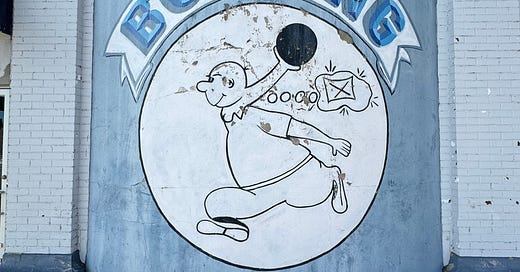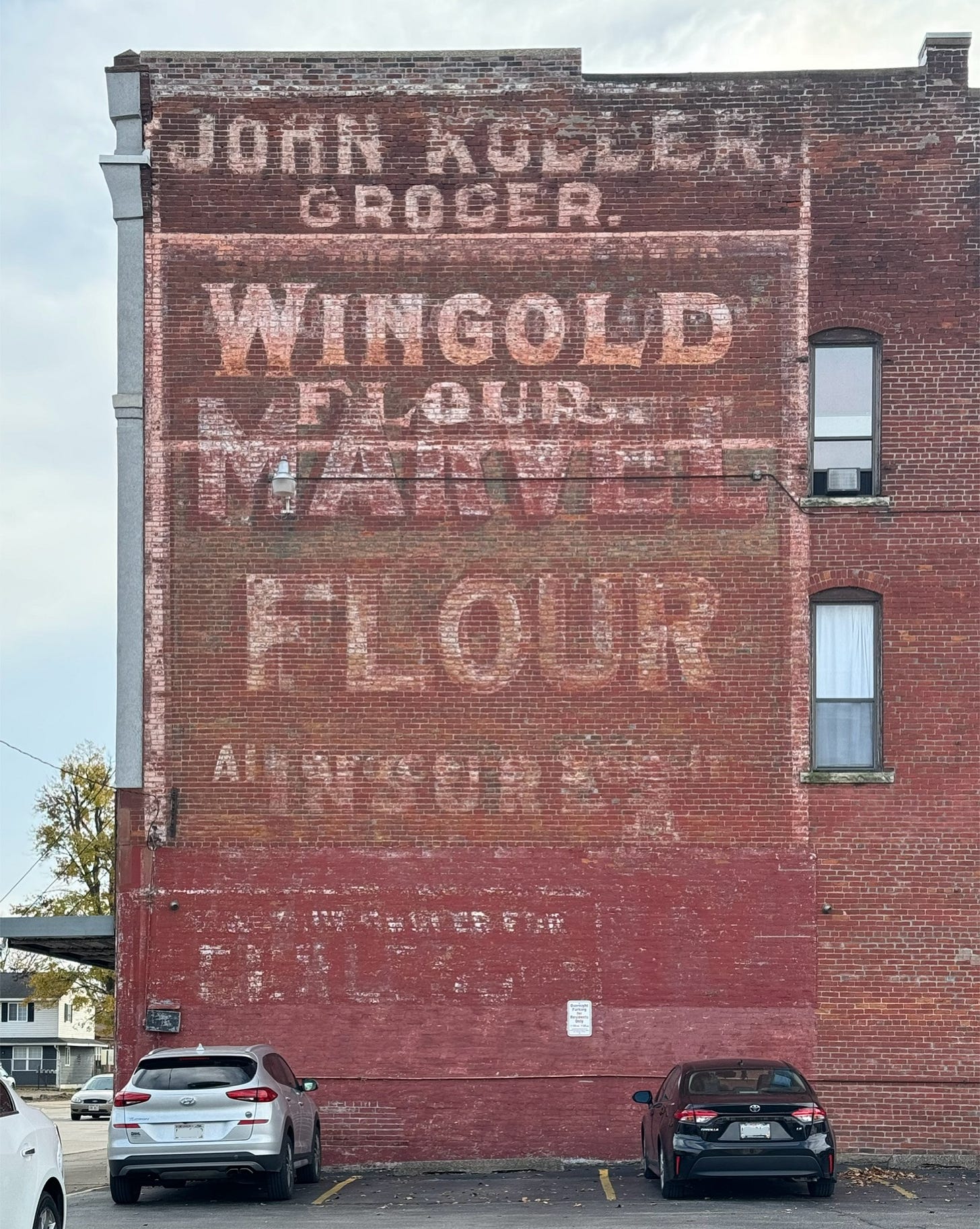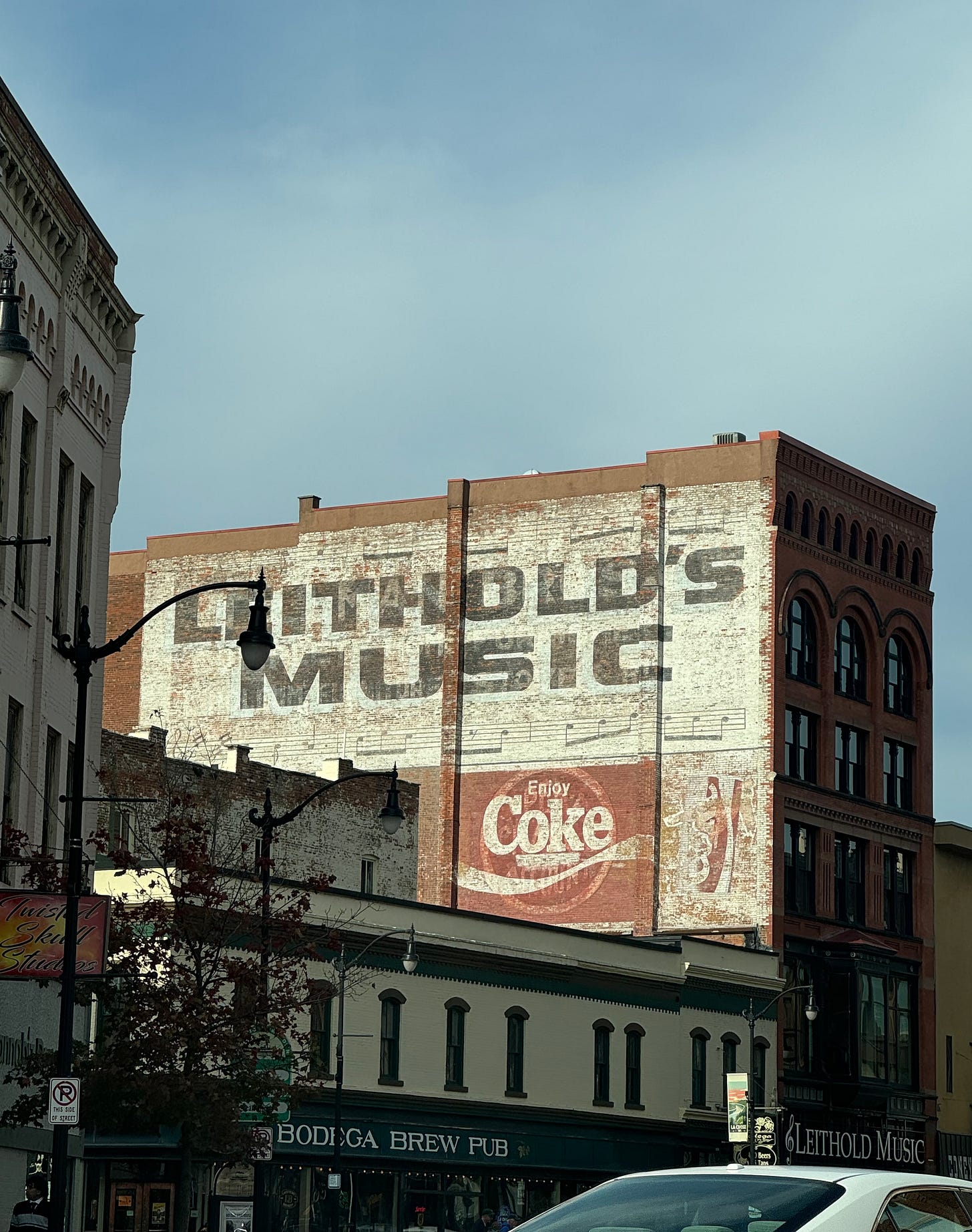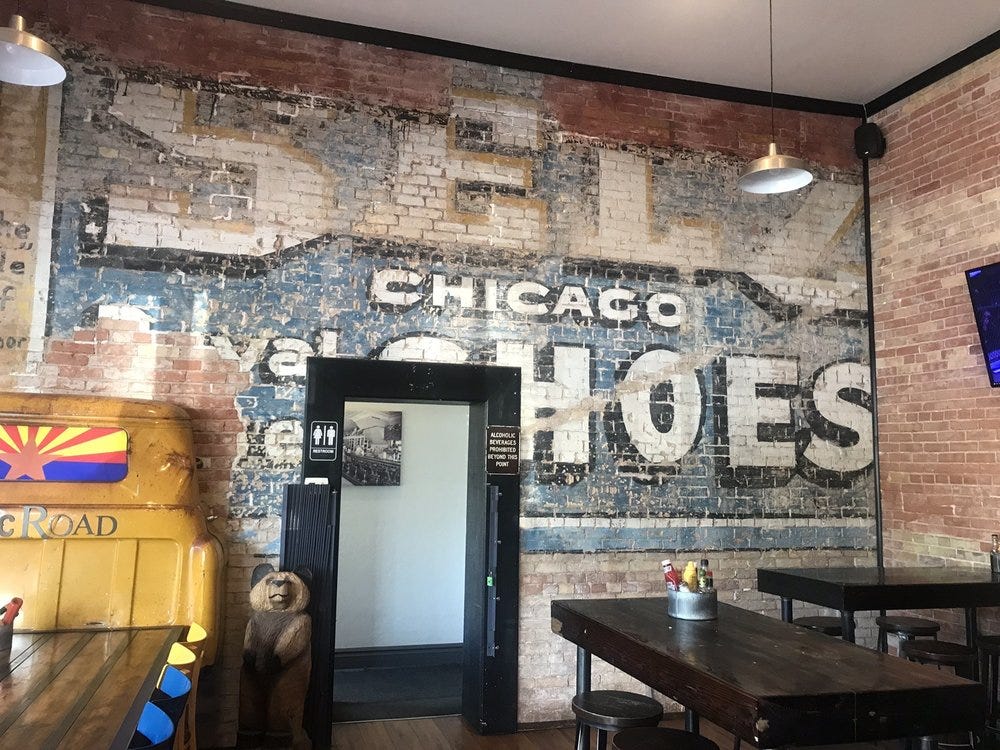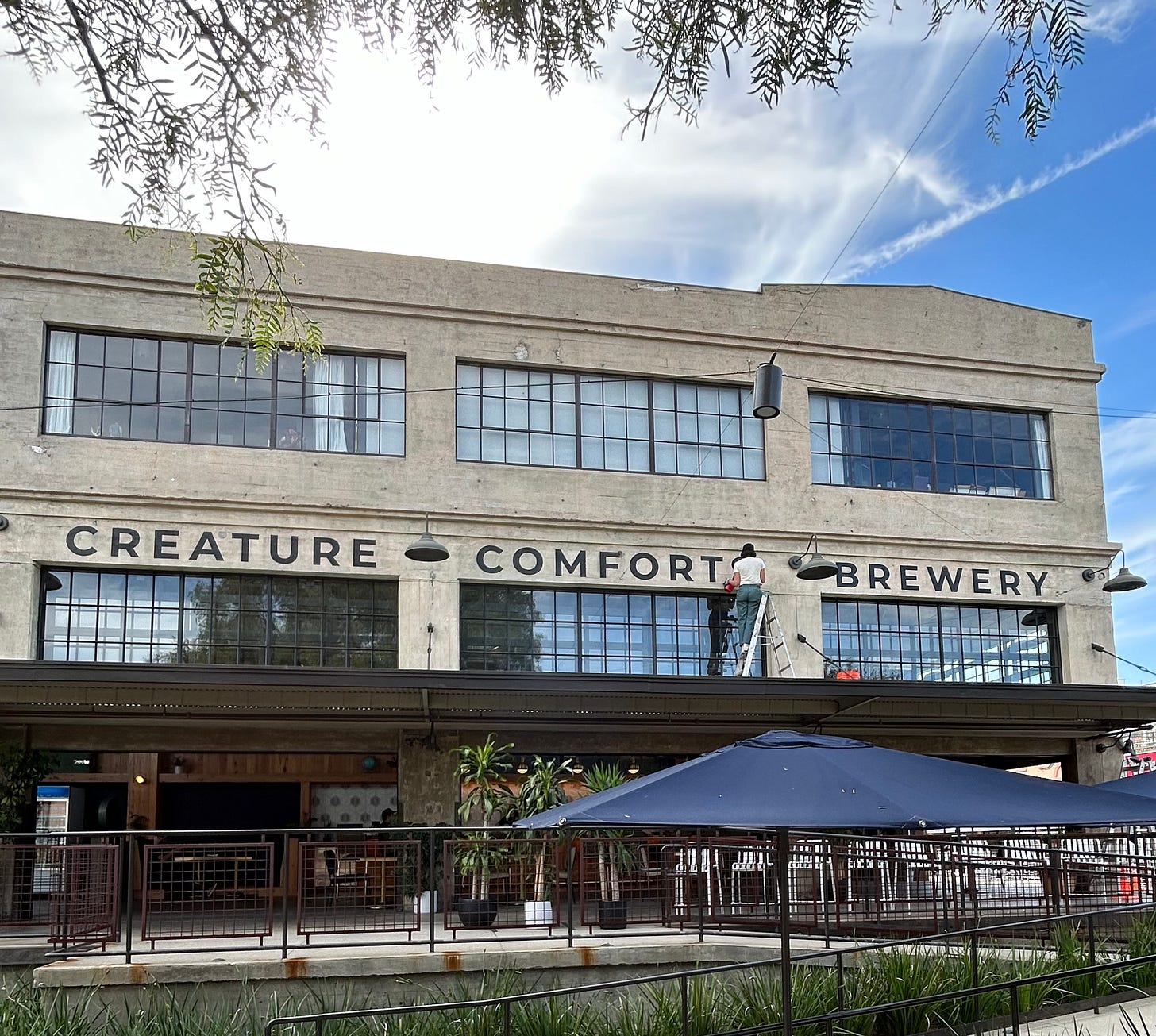A quick note before we jump in: I’ll be speaking on a panel at Benny Boy Brewing’s quarterly Female Founders Night on December 4th, 6-9pm. Tickets are $20 and include a tour of the brewery and cidery. Come say hi, I’d love to see you!
Hello friends,
This month’s piece is late, if we’re choosing to abide by the made-up precedents I set for myself. While planning for The Anvil, one of my goals was to publish something new on the first of each month. I knew I would find this challenging (I don’t always enjoy strict routines), but I think there is some merit to showing up for something you said you were going to do, time and time again.
On the other hand, I’m also a person who is trying to practice more self-compassion, and after facing a toppling to-do list before heading out of town, I just couldn’t get a darn freaking post out. It was a road trip that caused the tardiness, but what I saw on the drive informs this month’s topic, so it seems to be pretty kismet. We’ll let it slide.
Starting November 1st, my boyfriend and I spent a week winding our way from Minnesota, his home state, back to Los Angeles, our current home. We backtracked a little to Wisconsin, riding alongside the Mississippi River and the bluffs of the Driftless Area, and then headed westward. We wound through Iowa (one pit stop included a ride on the world’s shortest and steepest railroad) and Nebraska, dipped down south through Colorado to New Mexico (Santa Fe continues to have my heart), and trekked the final stretch through Arizona, not without a stop in Sedona.

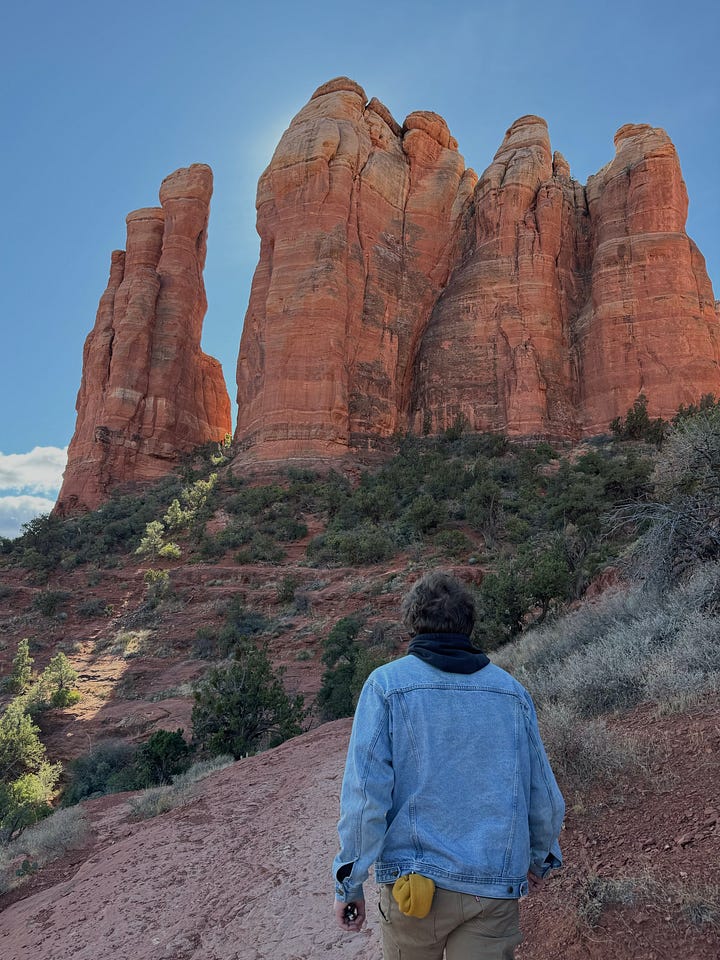


Sprinkled along this journey were some of my favorite things to spot: ghost signs. According to Sam Robert’s Ghost Signs: A London Story, the term was coined around 40 years ago, and the simplest definition is “old painted signs that are gradually fading on walls.” The book goes on to explain that the definition is a bit murkier than that (e.g., How old do they need to be? How faded? Do murals, street art, and graffiti count, or just advertisements?), but I think most people agree that ghost signs refer to old advertisements in a deteriorating state on a brick, concrete, or wooden surface.
Our first major sighting was when we drove through La Crosse, Wisconsin, and were treated to this beauty:
This ghost sign is also a palimpsest, which is when you can see multiple layers of signs that were painted over each other. On his Ghostsigns website, Sam notes that this is most often seen on walls with “very high visibility which would have been sold and re-sold to advertisers for specified periods of time.”
We also saw this double feature of Leithold’s Music, which has been serving the La Crosse area for over 135 years, and a classic Coke advertisement. Upon closer inspection, we have another palimpsest—there are countless letters showing through the black letters of Leithold’s Music, and there are early advertisements underneath the Coke piece.
There were ghost signs aplenty in Lincoln, Nebraska, the most interesting being this sign for the now-closed sports bar Sweep Left, which opened in 1976 by three former football players: Tony Davis, Mark Doak and Dennis Pavelka. Note that the color of the football jerseys has faded completely, but the black shading and yellow background panel create the illusion of yellow shirts:
At one point, we were eating dinner at a restaurant in Winslow, Arizona (cue Take It Easy by The Eagles), and one of the walls inside featured yet another ghost sign—a faded advertisement for an old shoe store next door.
One big reason we have ghost signs is due to the widespread use of lead paint. Lead wasn’t just an additive to paint—it was the paint itself, a concoction of the element mixed with oil. While paint today is thankfully much safer to use, the fondly-remembered lead paints had a depth of pigment and staying power that went beyond anything on the market today: white lead is photostable and water resistant, and red lead chemically bonds to iron, making it a popular choice for bridges and steel structures. Another favored color was chrome yellow, explaining the aforementioned Sweep Left sign. (For more on lead in paint, I highly recommend this read over at BLAG, from which all of my paraphrasing is sourced.)
While most ghost signs are crumbling away, sometimes “new” ones are rediscovered after being covered up—take these signs in Chicago that were hidden under wood siding (click through for the video):
Largely protected from the elements, these signs were remarkably preserved, and thanks to the efforts of Andrew and Kelsey McClellan of Heart and Bone Signs, they were saved from being destroyed: each plank was carefully removed and sent off to their forever home at Cincinnati's American Sign Museum.
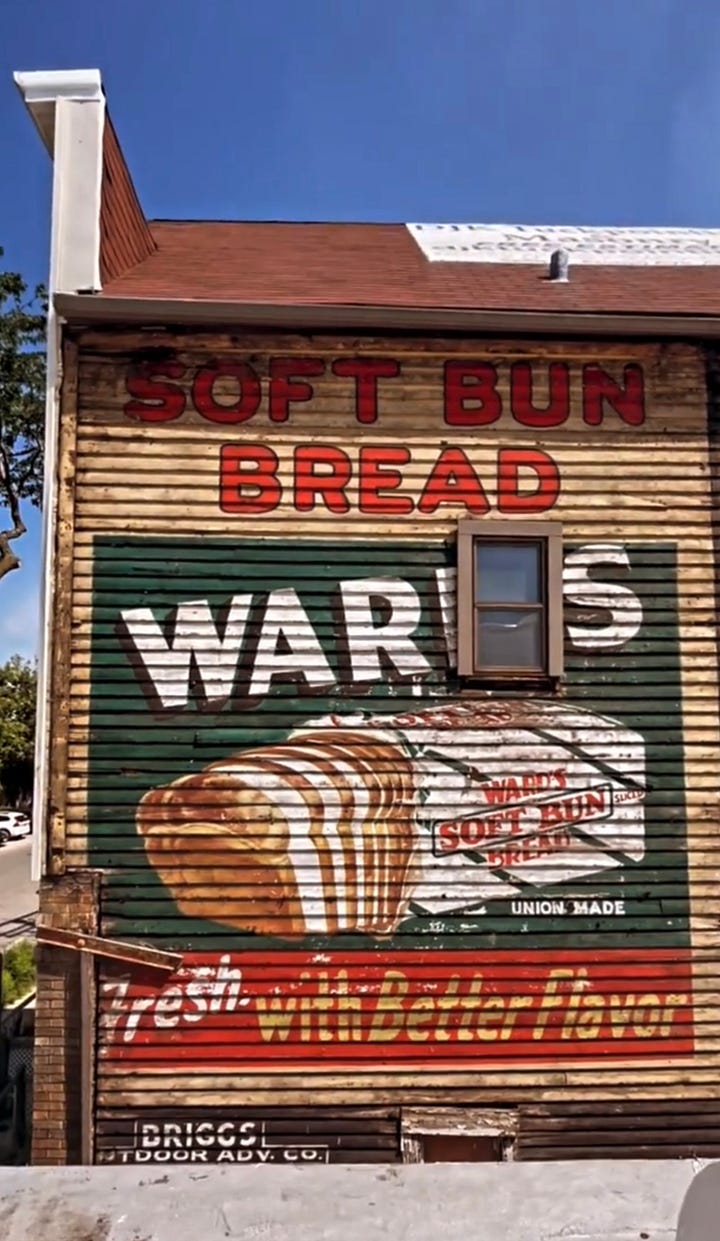

Whenever I spot a ghost sign, it feels like a form of time travel. My mind drifts, envisioning the street decades ago, everyone in their old timey clothes milling about. And then there's the sign itself, revealing aesthetics from sign painting history—letterforms, layout, scale, color if you’re lucky. I imagine painters perched upon rickety swing-stages, pouncing their sign patterns or laying them out by hand: if they knew their sign would exist over a century later, would they could go back and fix a wonky letter? I think about the human need to get the word out, to advertise, to communicate, to sell, to influence, to persuade, to occupy. I take a photo.
So many of the signs that I paint in the commercial realm feel fleeting, especially in a city like Los Angeles. Restaurants open and close, paint gets scraped or coated over. I foster a healthy level of detachment to everything I paint, for each sign is simply serving its purpose for a brief moment in time.
One sign I’ve painted that might have a shot of being a future ghost sign was for Creature Comforts Brewing. The brewery is a slice of The City Market of Los Angeles, which ran from 1909 through 2009, and served as the central and oldest wholesale produce market. Now, it’s a collection of restaurants, breweries, offices, apartments, and other mixed-used buildings.
Upon surveying the strip of concrete I was set to paint, I could see remnants of the previous sign, catching glimpses of PRODUCE and MORSE.
Maybe one day someone will be squinting at it, wondering why they can read a faint CREATURE.
Next time you see a ghost sign, pause for a moment and take it in. And then maybe take a picture, because it won’t be around forever.
xo
Jenna
P.S. One of my favorite corners of ghost sign lore is this Facebook group, which does NOT want your ghost stories:
P. P. S. For more on Ghost Signs, I definitely recommend picking up a copy of Ghost Signs: A London Story by Sam Roberts. While it is focused on London, it contains well-researched anecdotes on all things ghost signs. Sam also happens to be a gem of a human, who has channeled his passion about signs into writing books, as well as the online publication and only sign painting magazine in print, BLAG. The world of sign painting is better off due to his diligent studies, serving as a modern historian and observer of this centuries-old craft, as well as connecting sign painters from around the world. I am a Sub-Editor of BLAG and copy edit each issue, so I’ve seen it firsthand!


